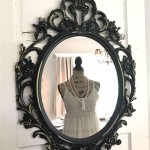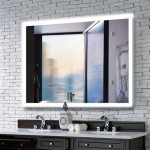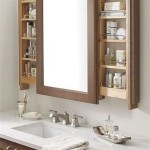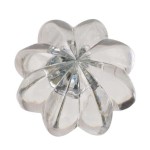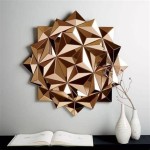Three-Sided Mirror Physics
Three-sided mirrors, also known as corner reflectors or corner cubes, possess unique optical properties derived from the laws of reflection. These properties find applications in diverse fields, from everyday life to sophisticated scientific instruments. Understanding the physics behind these seemingly simple objects reveals a fascinating interplay of geometry and optics.
The Law of Reflection and its Role in Three-Sided Mirrors
The fundamental principle governing the behavior of light in a three-sided mirror is the law of reflection. This law states that the angle of incidence, the angle between the incoming light ray and the surface normal (a line perpendicular to the surface), is equal to the angle of reflection, the angle between the reflected light ray and the surface normal. This principle applies to each individual reflection within the corner reflector.
A three-sided mirror is formed by three mutually perpendicular, reflective surfaces. When a light ray enters the corner reflector, it undergoes a series of reflections, one from each surface. The specific geometry of the three surfaces ensures that, regardless of the initial angle of incidence, the light ray will be reflected back parallel to its original direction. This phenomenon is known as retroreflection.
Retroreflection: The Defining Characteristic
Retroreflection is the defining characteristic of a three-sided mirror. This means that the reflected light ray returns along a path parallel to the incident ray, effectively reversing its direction. This property holds true regardless of the orientation of the mirror itself, a crucial aspect that distinguishes it from a single plane mirror. A plane mirror only reflects light back parallel to its source if the mirror is precisely perpendicular to the incident beam.
The retroreflective property arises from the cumulative effect of the three reflections. Each reflection alters the direction of the light ray, and the combination of these three alterations results in a net 180-degree change in direction, sending the light back along its original path. This is demonstrable through vector analysis, where each reflection can be represented as a transformation of the incident light ray's direction vector.
Applications of Three-Sided Mirrors
The unique retroreflective property of three-sided mirrors finds numerous practical applications. One common example is in bicycle reflectors and road signs. These devices incorporate arrays of small corner reflectors that reflect car headlights directly back towards the driver, increasing visibility at night.
In surveying and rangefinding, specialized prisms based on the three-sided mirror principle are used. These prisms, often referred to as corner cube prisms, are incorporated into instruments that measure distance by timing the round trip of a laser beam. The retroreflective property ensures the beam returns precisely to its source, enabling accurate distance measurement.
Furthermore, corner reflectors find application in space exploration. The Lunar Laser Ranging experiment utilizes retroreflectors placed on the Moon's surface by Apollo astronauts. Scientists on Earth can bounce laser beams off these reflectors and precisely measure the time of flight, providing valuable data about the Earth-Moon distance and lunar motion.
Construction and Materials of Three-Sided Mirrors
Three-sided mirrors can be constructed from various reflective materials. Solid glass or plastic prisms with internally reflective surfaces are commonly used for high-precision applications. For less demanding applications, such as bicycle reflectors, arrays of mirrored plastic segments can be employed. The key requirement is the accurate formation of the three mutually perpendicular surfaces, as deviations from this ideal geometry can compromise the retroreflective performance.
Hollow corner reflectors, formed by three mutually perpendicular mirrored surfaces, also exhibit retroreflection. This type of construction offers advantages in terms of weight and cost, particularly for larger reflectors. However, care must be taken to ensure the structural integrity and alignment of the reflective surfaces.
Limitations and Considerations
While three-sided mirrors offer remarkable retroreflective properties, certain limitations need to be considered. The quality of the reflection and the overall efficiency of the retroreflection depend on the reflectivity of the surfaces. Imperfect reflectivity can result in some light being absorbed or scattered, reducing the intensity of the returned beam.
Furthermore, the retroreflective property is most effective when the incident light rays are close to parallel. For highly divergent light sources, the returned beam may not be perfectly parallel to the incident rays, leading to a spread in the reflected light. This effect can be mitigated by using smaller individual corner reflectors within an array.

Optical Mirror Physics

The Three Laws Of Reflection

Molecular Expressions Microscopy Primer Physics Of Light And Color Introduction To Mirrors

4 7 Image Formation By Mirrors Douglas College Physics 1207

The Three Laws Of Reflection

The Three Laws Of Reflection

How Mirrors Lenses And Prisms Shape Light Systems Laser Focus World

Image Formed A Plane Mirror Explained With Characterstics And Uses Cbse Tuts

Image Formation By Spherical Mirror Geeksforgeeks

Spherical Mirrors

